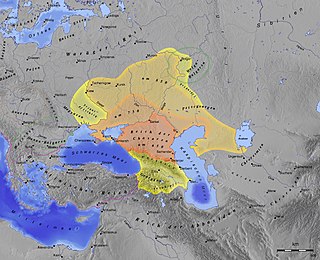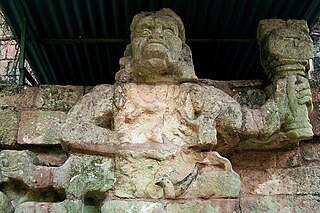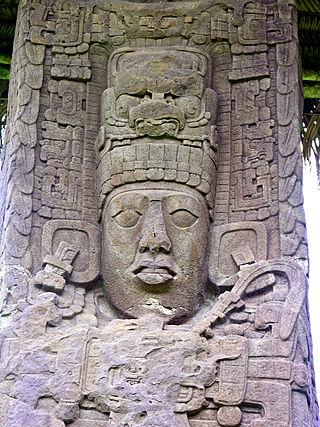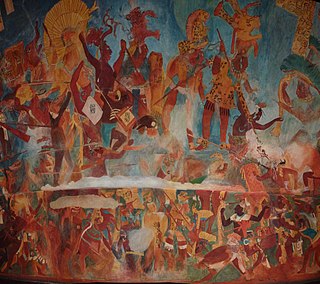The 730s decade ran from January 1, 730, to December 31, 739.
The 690s decade ran from January 1, 690, to December 31, 699.

Year 650 (DCL) was a common year starting on Friday of the Julian calendar. The denomination 650 for this year has been used since the early medieval period, when the Anno Domini calendar era became the prevalent method in Europe for naming years.

Year 695 (DCXCV) was a common year starting on Friday of the Julian calendar. The denomination 695 for this year has been used since the early medieval period, when the Anno Domini calendar era became the prevalent method in Europe for naming years.

Year 721 (DCCXXI) was a common year starting on Wednesday of the Julian calendar. The denomination 721 for this year has been used since the early medieval period, when the Anno Domini calendar era became the prevalent method in Europe for naming years.

Year 734 (DCCXXXIV) was a common year starting on Friday of the Julian calendar, the 734th year of the Common Era (CE) and Anno Domini (AD) designations, the 734th year of the 1st millennium, the 34th year of the 8th century, and the 5th year of the 730s decade. The denomination 734 for this year has been used since the early medieval period, when the Anno Domini calendar era became the prevalent method in Europe for naming years.

Year 738 (DCCXXXVIII) was a common year starting on Wednesday of the Julian calendar, the 738th year of the Common Era (CE) and Anno Domini (AD) designations, the 738th year of the 1st millennium, the 38th year of the 8th century, and the 9th year of the 730s decade. The denomination 738 for this year has been used since the early medieval period, when the Anno Domini calendar era became the prevalent method in Europe for naming years.

Copán is an archaeological site of the Maya civilization in the Copán Department of western Honduras, not far from the border with Guatemala. It is one of the most important sites of the Maya civilization, which was not excavated until the 19th century. The ruined citadel and imposing public squares reveal the three main stages of development before the city was abandoned in the early 10th century.

Tikal is the ruin of an ancient city, which was likely to have been called Yax Mutal, found in a rainforest in Guatemala. It is one of the largest archeological sites and urban centers of the pre-Columbian Maya civilization. It is located in the archeological region of the Petén Basin in what is now northern Guatemala. Situated in Petén Department, the site is part of Guatemala's Tikal National Park and in 1979 it was declared a UNESCO World Heritage Site.

Quiriguá (Spanish pronunciation:[kiɾiˈɣwa]) is an ancient Maya archaeological site in the department of Izabal in south-eastern Guatemala. It is a medium-sized site covering approximately 3 square kilometres (1.2 sq mi) along the lower Motagua River, with the ceremonial center about 1 km (0.6 mi) from the north bank. During the Maya Classic Period (AD 200–900), Quiriguá was situated at the juncture of several important trade routes. The site was occupied by 200, construction on the acropolis had begun by about 550, and an explosion of grander construction started in the 8th century. All construction had halted by about 850, except for a brief period of reoccupation in the Early Postclassic (c. 900 – c. 1200). Quiriguá shares its architectural and sculptural styles with the nearby Classic Period city of Copán, with whose history it is closely entwined.

Naranjo is a Pre-Columbian Maya city in the Petén Basin region of Guatemala. It was occupied from about 500 BC to 950 AD, with its height in the Late Classic Period. The site is part of Yaxha-Nakum-Naranjo National Park. The city lies along the Mopan and Holmul rivers, and is about 50 km east of the site of Tikal. Naranjo has been the victim of severe looting. The site is known for its polychrome ceramic style.

Calakmul is a Maya archaeological site in the Mexican state of Campeche, deep in the jungles of the greater Petén Basin region. It is 35 kilometres (22 mi) from the Guatemalan border. Calakmul was one of the largest and most powerful ancient cities ever uncovered in the Maya lowlands.

Uaxaclajuun Ubʼaah Kʼawiil, was the 13th ajaw or ruler of the powerful Maya polity associated with the site of Copán in modern Honduras. He ruled from January 2, 695, to May 3, 738.

Kʼakʼ Tiliw Chan Yopaat, previously known variously as Cauac Sky, Kawak Sky, Butsʼ Tiliw and Butzʼ Tiʼliw, was the leader of the ancient Maya city-state of Quiriguá.

Lady Six Sky, also known as Lady Wac Chanil Ahau or Wak Chanil Ajaw, was a Maya queen of Naranjo who was born in Dos Pilas. She lived in Naranjo from 682 to her death in 741. During that time, she probably served as de facto ruler of the city; however, monuments such as Stela 24 suggest she was never formally recognized as such, since she continued to use the emblem glyph of Dos Pilas throughout her life.
Kʼakʼ Tiliw Chan Chaak [kʼakʼ tiliw tʃan tʃaːk], alternatively known by the nickname Smoking Squirrel bestowed before his name glyph was deciphered, was a Maya ruler of Naranjo. He led the city during an extensive military campaign against Yaxha; however, because of his young age at the time, it is presumed that his mother organized much of the campaign.
Bʼalaj Chan Kʼawiil [ɓʔalax tʃan kʼawiːl] was a Maya king of Dos Pilas. He is also known as Ruler 1, Flint Sky God K and Malah Chan Kʼawil.

The Third Tikal–Calakmul War was the third in a series of wars between Tikal and Calakmul, two of the Major superpowers of the Maya Civilization during the classic period.

The Tikal–Calakmul wars were a series of wars, mainly between Tikal and Calakmul on the Yucatán Peninsula, but also with vassal states in the Petén Basin such as Copán, Dos Pilas, Naranjo, Sacul, Quiriguá, and briefly Yaxchilan had a role in initiating the first war.

The Yax Kuk Mo dynasty was the royal house that reigned in the city-state of Copan (Oxwitik) for four centuries. This was installed in the city in the year 426 a.C, due to Teotihuacan influence and military support from the ruler Sihyaj Chan K'awiil II of Tikal, who ruled between the 5th and 9th centuries. The architectural works built in Copán during the rule of the Yax K'uk Mo' dynasty are preserved to this day, being accessible to the general public. Yax Kuk Mo In mayan means First Quetzal Macaw.















